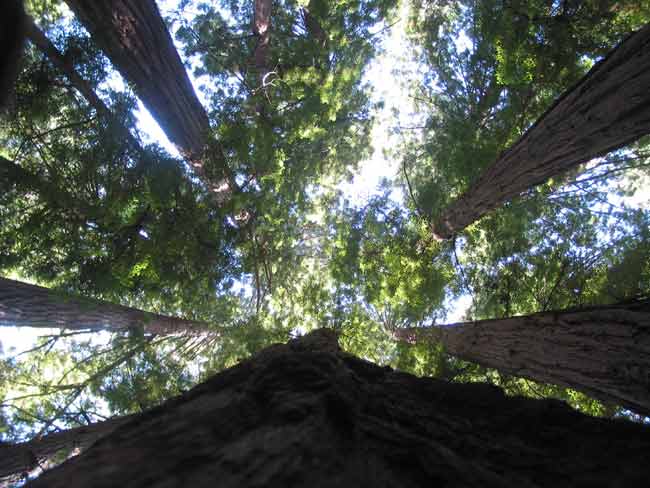Less Fog in California Could Stress Redwoods

Significantly less fog is drifting in along the Pacific Coast these days, a new study finds. The shift force a decline in redwood trees, which rely on the fog to keep them supplied with water during the arid summer months.
Climate models have predicted that with the warming caused by the buildup of greenhouse gases in Earth's atmosphere, California's coastal fog would increase as a result of changing atmosphere and ocean circulation patterns.
But weather records that just recently became available have shown the opposite trend of a significant decrease in fog over the past 100 years.
"Since 1901, the average number of hours of fog along the coast in summer has dropped from 56 percent to 42 percent, which is a loss of about three hours per day," said study leader James A. Johnstone, who conducted the research while working on his Ph.D. at the University of California, Berkeley, and is now at the University of Washington in Seattle.
Warmer, too
And the decline in fog isn't the only change to affect the coastal area where redwoods reside.
"A cool coast and warm interior is one of the defining characteristics of California's coastal climate, but the temperature difference between the coast and interior has declined substantially in the last century, in step with the decline in summer fog," Johnstone said.
Get the world’s most fascinating discoveries delivered straight to your inbox.
Both of these changes could impact the health of the iconic coast redwood (Sequoia semperviren), one of the tallest and longest-lived tree species in the world, with some individual trees passing the 2,000-year mark.
Elsewhere, global warming is causing some trees to grow faster. But a warmer world is bad news for redwood trees.
Redwoods aren't very good at regulating their water use. At night, they leave open their stomata — the pores on leaves that plants use to exchange gases such as water vapor and carbon dioxide with the air — which allows water to leave, but doesn't give them any of the benefits of photosynthesis, since there is no light shining on them.
Fog helps the redwoods conserve water, because it increases the humidity of the air around the trees, so less water escapes from their leaves.
A decrease in fog cover and an increase in coastal temperature could combine to make the trees lose more water and become drought-stressed.
"Fog prevents water loss from redwoods in summer, and is really important for both the tree and the forest," said Todd Dawson, also of UC Berkeley, who co-authored the study that describes the fog changes. "If the fog is gone, we might not have the redwood forests we do now."
Broader impacts
And any change in the redwood forests, could have broader impacts on the regional ecosystem.
"As fog decreases, the mature redwoods along the coast are not likely to die outright, but there may be less recruitment of new trees; they will look elsewhere for water, high humidity and cooler temperatures," Dawson said. "What does that mean for the current redwood range and that of the plants and animals with them?"
The study, detailed this week in the journal Proceedings of the National Academy of Sciences, is the first to show that fog is not as ephemeral a phenomenon as it may seem and that it in fact is a systematic process connected to the larger Pacific Coast climate, Johnstone told LiveScience.
The work was supported by the Save the Redwoods League and the Berkeley Atmospheric Sciences Center.
- Images: Curious Clouds
- The Most Awe-Inspiring Natural Wonders in America
- Yosemite Losing Its Big Trees

Andrea Thompson is an associate editor at Scientific American, where she covers sustainability, energy and the environment. Prior to that, she was a senior writer covering climate science at Climate Central and a reporter and editor at Live Science, where she primarily covered Earth science and the environment. She holds a graduate degree in science health and environmental reporting from New York University, as well as a bachelor of science and and masters of science in atmospheric chemistry from the Georgia Institute of Technology.
